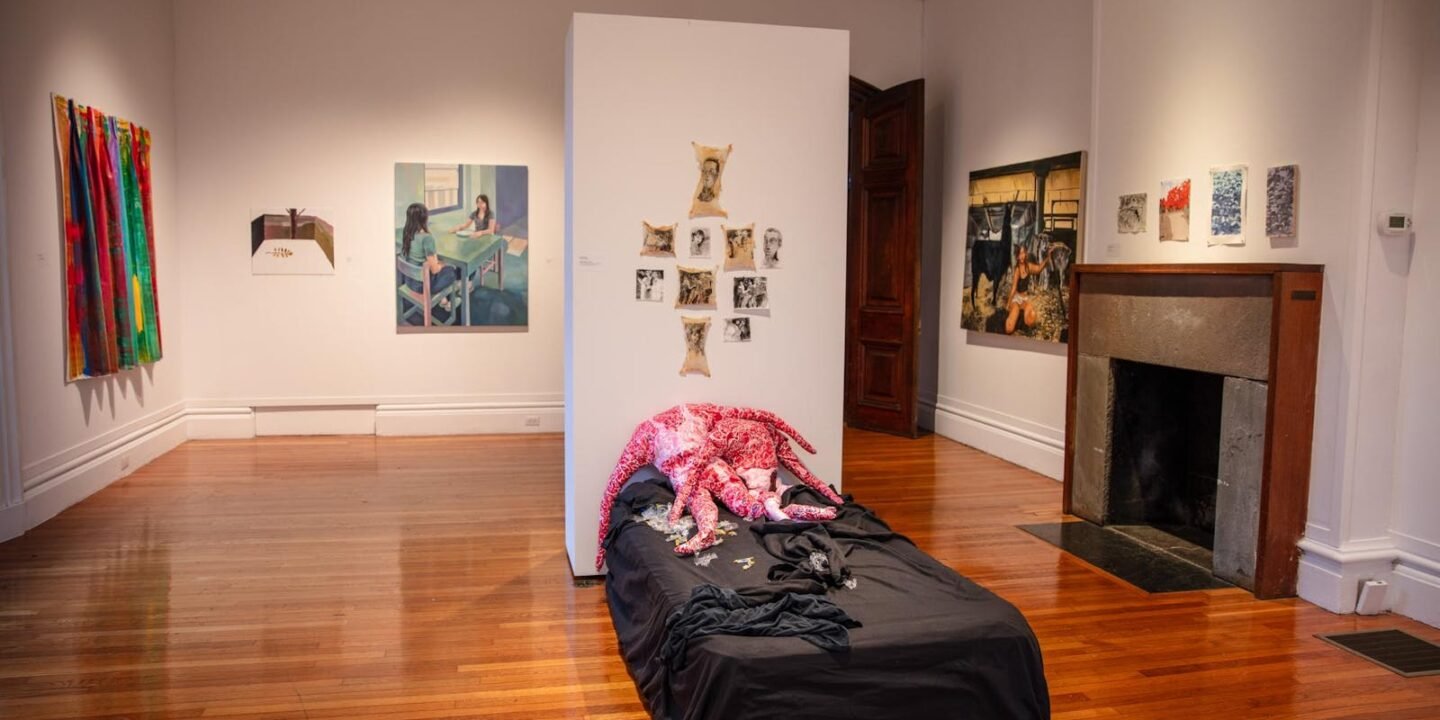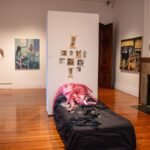
On Nov. 6, the Rhode Island School of Design’s Painting Department opened its triennial exhibition in the Woods-Gerry Gallery, featuring selected work from the department’s undergraduate seniors and graduate students. The display, which the department organizes every three years, will be open until Nov. 16.
The work featured in this year’s exhibition diverges in more varied directions, compared to pieces featured in past interactions of the display, said Jackie Gendel, a RISD painting professor and the head of the school’s painting department.
She attributes this trend to a moment where students are increasingly coming up with new ideas and trying to find novel directions for their artwork.
RISD senior Larisa Kachko said she was inspired by her upbringing, Soviet aesthetics and the current political climate while working on her oil painting, “Untitled,” which is on display at the exhibition.
The painting depicts a woman sitting alongside various household objects — a television set, a large porcelain piece, furniture, hanging clothes and clocks. The work blends these objects with faces, colors and depictions of animals to create a collage-style piece.
While working on the painting, Kachko experimented with layering different paints. She said her overall artistic style is not “necessarily stylistically coherent,” but that she does always enjoy working on figurative pieces.
Additionally, the piece aims to explore “the complexities of nostalgia,” Kachko said, adding how the feeling of nostalgia is good but dangerous at the same time, especially in a political context marked by deliberately constructed historical narratives.
Another piece featured in the exhibit, titled “Reflection on the Window,” displays a large, close-up frame of a woman’s face. The oil painting was created by Rokyi Li, a senior at RISD.
Having studied glass before switching to painting, Li said this work was inspired by their fascination with glass’s transparency and mirror-like qualities.
When viewers walk up to Li’s piece, they come face to face with their reflection. Li explained that the painting features interference pigment — a paint material that gives pieces a reflective quality when viewed from up close.
RISD senior Wenhao Cai’s exhibition painting “Bearing” shows an artistic rendering of Cai’s studio space. The painting uses oil and oil enamel house paint on a sheet of plastic, which is stretched over stained wood. The piece is suspended from the ceiling in front of a window, allowing viewers to gaze at it from many sides and see the effect of daylight on the painting.
This effect is particularly significant to Cai, as she is interested in the interactions between light and humans, particularly how light is cast on people, but also how individuals can create shadows.
Cai said she believes these interactions reflect “the internal self and kind of the absence of the self.”
“I think the translucent plastic material I’ve been working with comes from my themes of working and thinking about a home,” Cai added. She said the plastic helped emphasize the theme of fragility in her piece.
Plastic is “meant to be discarded, it’s see-through and it wraps around things,” she added.
Dennis Congdon, a painting professor at RISD, said that he has attended many of the department’s exhibits since his time as a RISD undergraduate in the ’70s.
“This show is incredible,” Congdon said. Walking around the gallery floor, he pointed to many pieces and called them “introspective,” noting that this year’s show includes many more “uplifting” pieces compared to previous iterations of the exhibit.
“People are going forward from here,” he added.
Get The Herald delivered to your inbox daily.
As a professor, Gendel said she appreciates seeing the process behind the work displayed at the exhibition. She added that it’s very exciting when students come to class every week with new iterations of their work to be discussed.
When Cai first started working with plastic, she received lots of help from professors and peers about being “more intentional” with the new medium.
Li was “honored” to have her work featured in this year’s exhibit, she said, adding that there is also an increased sense of stress among many RISD seniors, especially this year. “I think this is like a place that we sort of forget all of those pressures,” he said.
Kachko said it was “really lovely” to be among her peers and professors at the exhibition. “I think that’s probably the best aspect of it,” she said.











